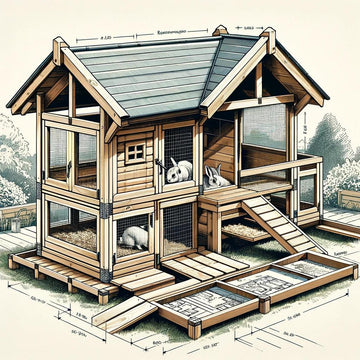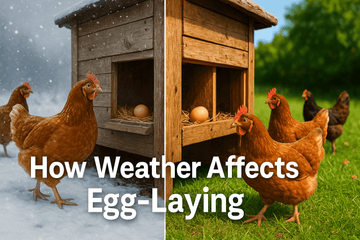Introduction to Rabbit Hutch Design
Welcome to your DIY journey on building the perfect rabbit hutch! Rabbits are delightful pets, known for their playful and gentle nature. Providing them with a safe and comfortable home is crucial for their well-being. This guide will walk you through the entire process of designing and constructing a rabbit hutch that is not only functional but also suits your rabbit's needs and your aesthetic preferences.
Importance of a Proper Rabbit Hutch
A well-designed rabbit hutch offers more than just shelter. It protects your rabbits from predators, harsh weather conditions, and diseases. A proper hutch allows enough space for movement and interaction, critical elements for a rabbit's mental and physical health.
Factors to Consider Before Building Your Hutch
Before you dive into building, consider the following:
- Size: Ensure the hutch is spacious enough for your rabbits to live and grow comfortably.
- Location: Choose a location that provides shade, protection from elements, and quiet from daily noise.
- Materials: Opt for durable materials that are safe for rabbits and easy to clean.
- Rabbit Needs: Different breeds may have specific requirements in terms of space and temperature.
Tools and Materials Needed
You'll need basic carpentry tools like a saw, hammer, drill, screws, wire cutters, and measuring tape. Materials include wood (treated for outdoor use), heavy-duty wire mesh, hinges, locks, and weather-resistant paint or varnish.
Preparing the Building Site
Select a flat, dry area close to your house for easy access. Clear the ground of debris and weeds, and consider a paved or concrete base to prevent predators from digging in.
Constructing the Frame
Start by constructing a rectangular frame for the base. Use sturdy beams to ensure the structure can support the hutch's weight and the rabbits' activity. Frame out sections that will become the living area, sleeping quarters, and potentially a run.

Adding the Roof and Walls
Install a slanted roof to allow rain and debris to slide off easily. Use solid wood for the walls for insulation and protection, leaving space for wire mesh windows for ventilation.
Finishing Touches: Doors and Wire Mesh
Install doors that are easy to open for feeding and cleaning but secure enough to keep rabbits safe. Cover all openings with strong wire mesh to prevent escape and entry from small predators.
Customization Ideas for Your Rabbit Hutch
Make your hutch unique with customization:
- Play Areas: Include ramps and platforms for exercise.
- Weather Protection: Add removable covers for windows and extra insulation for colder climates.
- Storage: Build integrated storage for food, bedding, and cleaning supplies.
Maintenance and Cleaning Tips
Maintain the hutch by:
- Regular Cleaning: Establish a routine to clean the hutch thoroughly every week.
- Wood Treatment: Use pet-safe products to treat the wood and prevent rot and pest infestation.
Conclusion
Building a rabbit hutch can be a rewarding project that enhances your pet's quality of life. With the right tools, materials, and a bit of creativity, you can create a safe and inviting home for your rabbits. Start your project today and enjoy the process of crafting a custom home for your furry friends.
FAQs About Rabbit Hutch Building
-
What is the best wood to use for a rabbit hutch?
- Treated pine or cedar is durable and safe for rabbits, provided it's sealed properly.
-
How big should a rabbit hutch be?
- At a minimum, provide 12 square feet of space for each rabbit, with more space being better.
-
How do I protect my rabbit hutch from predators?
- Ensure all openings are covered with strong wire mesh and the hutch is elevated from the ground.
-
Can I place my rabbit hutch outdoors?
- Yes, but ensure it is weatherproofed and placed in a location that protects it from extreme temperatures and direct sunlight.
-
What should I place on the floor of the hutch?
- Use straw, hay, or wood shavings for bedding, which provides comfort and absorbs moisture.





